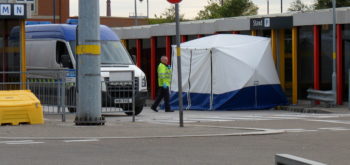Following a controversial death at the hands of the state, evidence presented by the pathologist at inquest or at a trial is absolutely crucial in determining what caused the death, and ultimately, whether anyone should be held to account for their actions.Sometimes the jury will have to make their judgment solely on the testimony of the medical expert if there is a lack of external evidence such as CCTV footage or witnesses.
In deaths involving restraint, either in prison or in police custody, the question of culpability becomes even more acutely important. Were the restraint methods employed by the officers appropriate in the circumstances? If so, should there be a review of the types of restraint used?
During the course of my work investigating deaths in police custody of the Bureau of Investigative Journalism I noticed a trend; time and time again experts commissioned on behalf of the police or the coroner disagreed with the findings of the family’s pathologist. See HERE for more.
One senior forensic pathologist admitted to me that the side that you represent can influence the outcome of your work. I found that shocking. Does that mean juries listening to the so-called impartial evidence of a medical examiner are in fact listening to an advocate representing their client?
Michael Mansfield QC, who has been representing the families of deaths in custody victims for decades, told me that in his experience forensic pathology is deeply subjective.
‘Pathology is extremely important, it’s extremely subjective in many cases and there’s a real risk that pathologists come to views that are informed by their own background and the police liaison. And often you get the same one called out by police, you get the same ones called out again and again. It’s a very unhealthy situation.’
Bias
A survey from last month of the country’s forensic pathologists commissioned by New Scientist following the government’s plans to scrap the UK’s national Forensic Science Service, also raised fresh questions about issues of bias in forensic science, with nearly a third of respondents admitting they sometimes felt pressured to produce a particular result.
This is compounded by the fact that in the majority of police custody deaths the pathologist will be briefed by officers from the force under scrutiny.
Pathologists are not simply disagreeing about the specific details of a medical condition; they will come up with completely opposing causes of death. It is not a system in which the families of victims have much confidence. They will have to employ their own pathologist at considerable expense to ask complex questions at the inquest regarding the nature of restraint.
Take the death-in-custody of Wayne Douglas in 1995 which caused such political tension that it precipitated the Brixton riots of the same year. He had been suspected of robbing a young couple at knifepoint when the police were called. Witnesses at the inquest recalled seeing multiple officers restraining him on the ground for a prolonged period of time. The state pathologist who conducted the first autopsy into his death concluding that the 25-year-old had died of ‘hypertensive heart disease’, pointing to an enlarged heart.
A post-mortem on behalf of the family conducted by the distinguished pathologist Professor Bernard Knight found no evidence of disease. He pointed instead to the way in which he had been restrained on the floor as the cause of death. Dr Nat Carey who reviewed the findings, said the heart was enlarged because Mr Douglas was an athlete, not because of disease.
The inquest into his death found that Douglas had been placed in the prone position, face-down with his hands behind his back on four separate occasions. The jury delivered a verdict acknowledging that the police’s methods of restraint had caused his death.
Restraint
This is just one of many controversial restraint deaths in which pathologists are divided along the lines of who they represent. In the case of newspaper vendor Ian Tomlinson who died in 2009, disagreement between the experts led to the CPS initially stating that the case could not be put before a jury. They reversed the decision after an inquest delivered a verdict of unlawful killing.
Identifying the role restraint played in a death in custody is notoriously hard for forensic pathologists. Prone restraint, where an individual is positioned face-down on the floor with their arms behind their backs, is acknowledged as a potentially lethal method. But often there will be no visible external injury suggesting a cause of death
However barrister Leslie Thomas, who represents families of many police restraint death victims, believes that certain pathologists ‘close their eyes to the obvious’ when it comes to considering restraint. ‘If you hold someone down in a prone position for a long time it is deleterious and dangerous, surely that is the most likely explanation. I have encountered ignorance. Some pathologists are not showing a good knowledge of the literature. At some inquests even I know more about positional asphyxia than some of the medical experts.’
Independence
In Ontario, Canada, the problem of potential partiality is avoided by completely excluding the police from the investigation following a death in custody. The coroner is a fully qualified doctor and always attends the scene, reporting the case to a group of independent senior coroners and lawyers at the head office who then decide whether an autopsy is necessary. An examination will then be performed by a pathologist employed by the coroner and reviewed by a college of independent pathologists.
This type of situation goes some way to making the system more rigorously impartial. In this country we have pathologists acting on behalf of the family, police or state.
Disagreement between experts will always occur in the complex science of forensic pathology. But the creation of a system which removes pathologists from the employment of a client will go some way to remedying a system in which subjectivity can cloud supposedly objective judgment.





